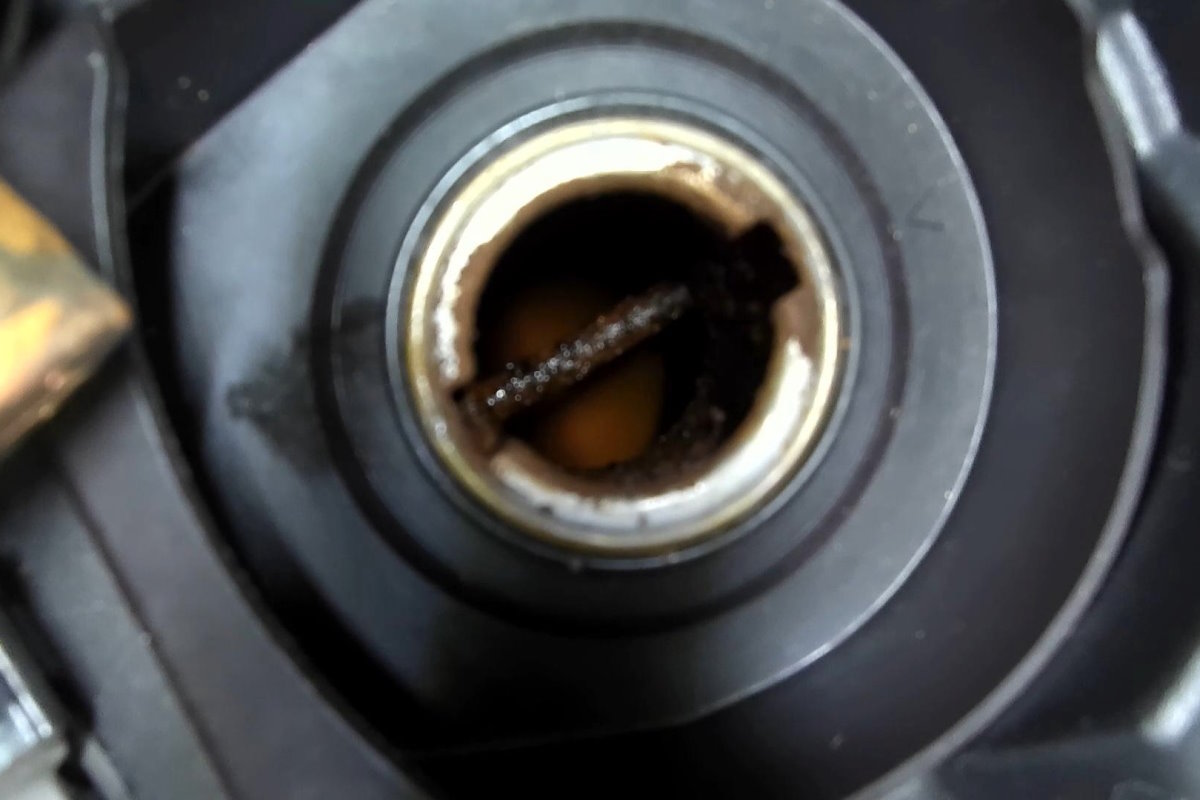The days of putting bolt nuts and chains in a fuel tank and swishing them around to remove rust are a thing of the Showa era. Now, thanks to high-performance neutral rust-removing chemicals, even stubborn rust can be removed by simply leaving the tank quietly.
However, the rust is not removed as much as expected! Is this not the case? The cause of this is often dirt on top of the rust. We want to remove the dirt in the tank before the rust is removed.
In such cases, the best solution is a neutral detergent for kitchen use.
- Draining rotten fuel is not enough to remove the stains.
- Sloppy, slimy dirt on rust that interferes with rust removal chemicals
Draining rotten fuel is not enough to remove the stains.


The tank left for more than 10 years with fuel in it, is badly rusted and, of course, the fuel is completely corroded. The mouthpiece of the fueling port was battered with red rust, but the tank itself was completely free of rust thanks to the rust-proof steel plate. On the other hand, the inside of the fuel pump, which was soaked in fuel, was covered with red rust. If you are sure of the long-term storage of an injection car, it would be better to drain the fuel completely from the tank.
Rust inside the fuel tank is one of the promises of vehicles left unattended for long periods of time. Although the rust-preventive performance of the steel material used in many commercial vehicle tanks has been improved to make them less susceptible to rust than older motorcycles, the joints between the bottom and sides are still susceptible to oxidation due to the high temperatures caused by welding, and depending on storage conditions, they are inevitably susceptible to rusting. In addition, recently there has been an increase in the number of rusting cases caused by the deterioration of fuel itself, and some say that it is better to empty the tank and spray anti-rust lubricant when you know you will not ride for a long period of time. A rusted tank can be easily identified by the foul odor as soon as the cap is opened. There is no way to describe the feeling of despair when you see rotten fuel and the brownish-brown interior of the tank through the fueling port, but even quite deep rust can be removed with modern high-performance rust-removing chemicals, as long as there are no holes. However, what should be removed before the rust is the dirt that has accumulated like sludge on top of the rust. Rust removal chemicals should be applied only after the altered fuel and water that has entered the tank have been removed, but some of the dirt is stubbornly stuck and may not be removed even if the fuel supply port, fuel cock, or, in the case of injection vehicles, the fuel pump is removed and drained from the inside of the tank.
Sloppy, slimy dirt on rust that interferes with rust removal chemicals
Rust inside the tank occurs on the bottom and sides of the steel material, but rust removal chemicals cannot react if sludge or slimy dirt is on top of the rust. This is because rust remover chemicals are designed to react with metal rust. Long ago, acidic rust removers removed rust by reacting a liquid with even stronger oxidizing power with rust-oxidized steel materials. In contrast, the main component of neutral-type rust remover chemicals is a surfactant.
Surfactants are also contained in common detergents, so one might imagine that they would be effective for fuel stains other than rust. However, surfactants vary widely in efficacy, and the surfactant used in fuel tank rust remover reacts with metal, but cannot remove oil stains. Of course, some products may be able to remove oil as well, but to maximize the effectiveness of general rust removal chemicals, the dirt covering the rust must be removed first.